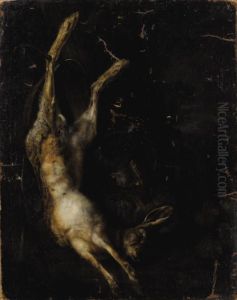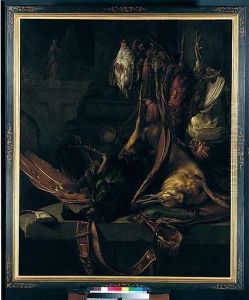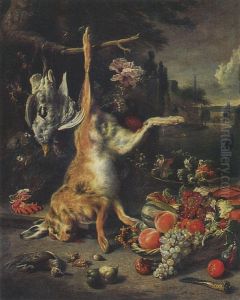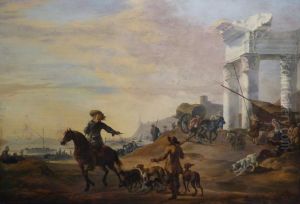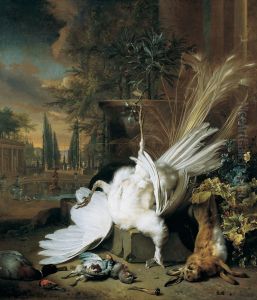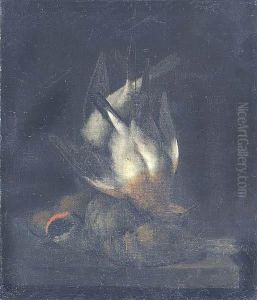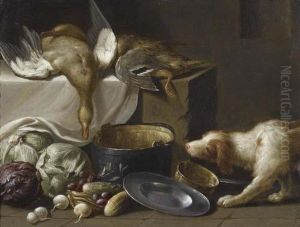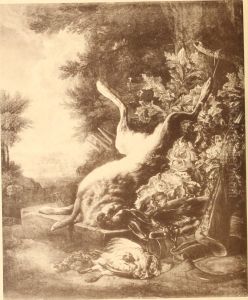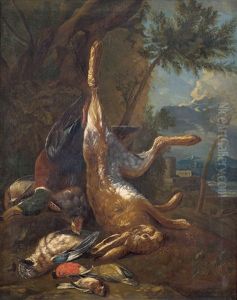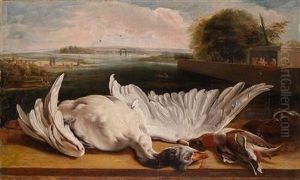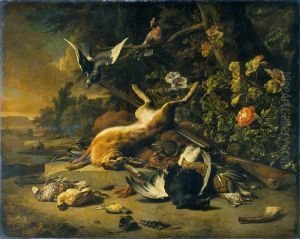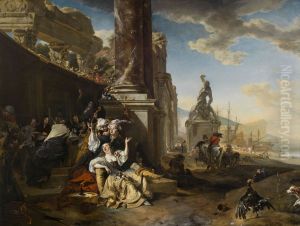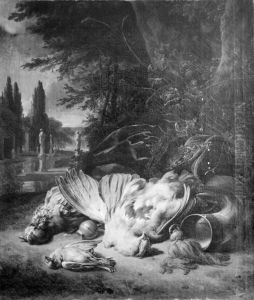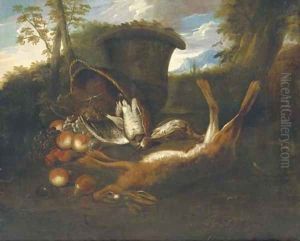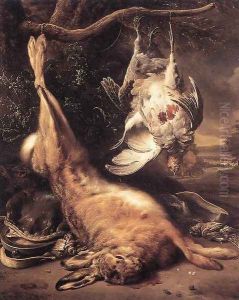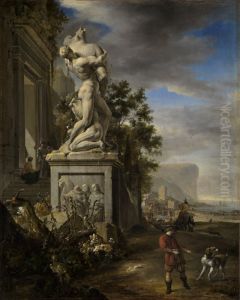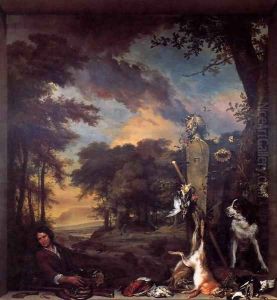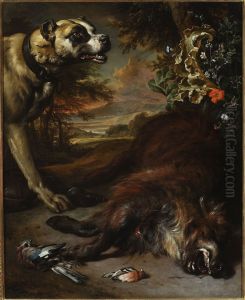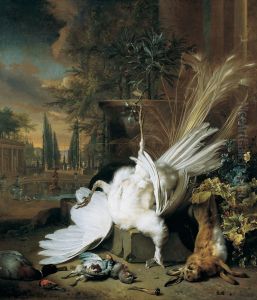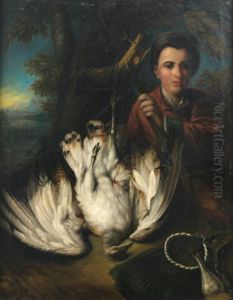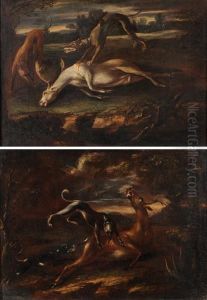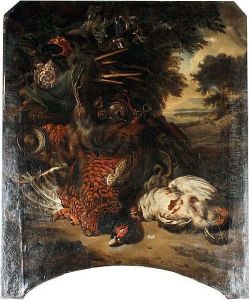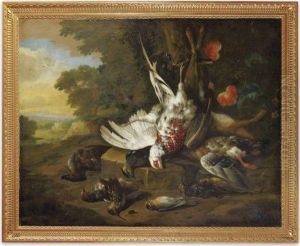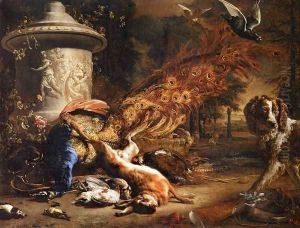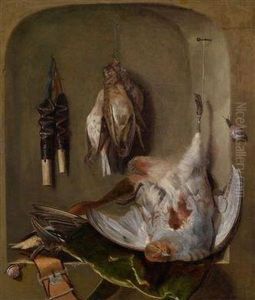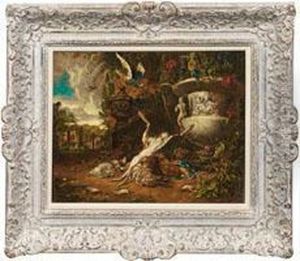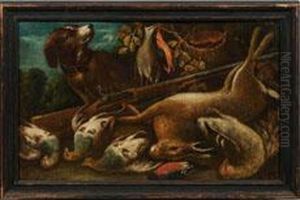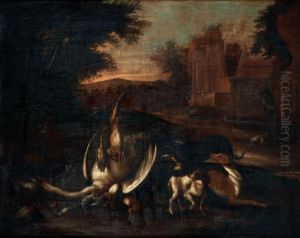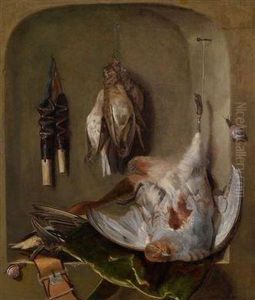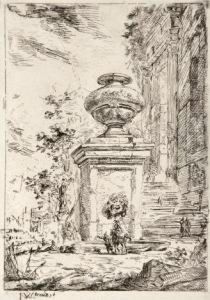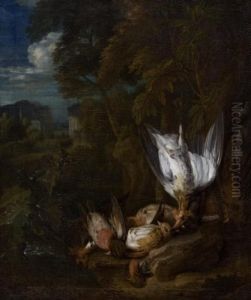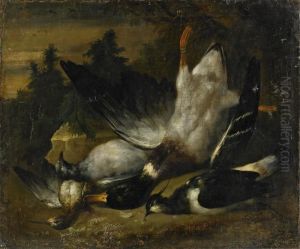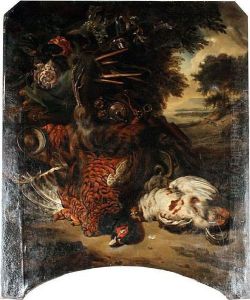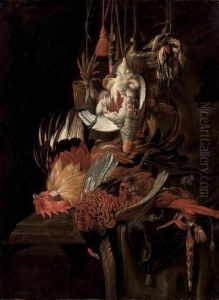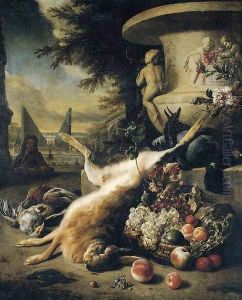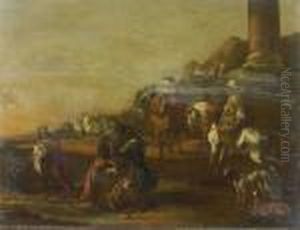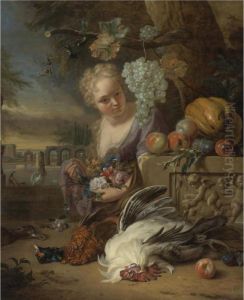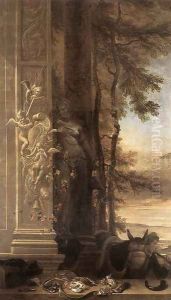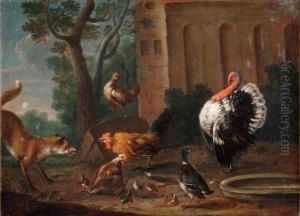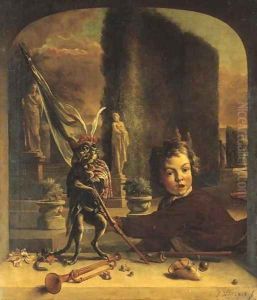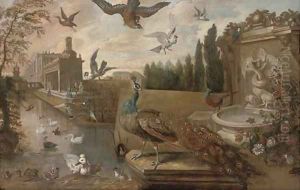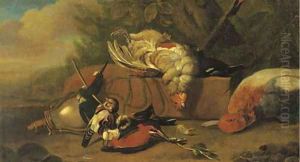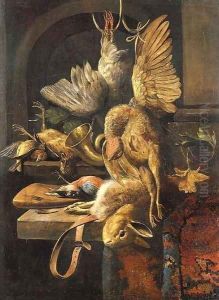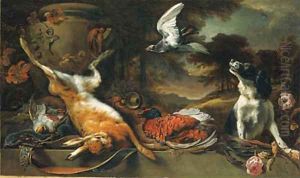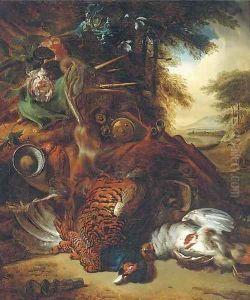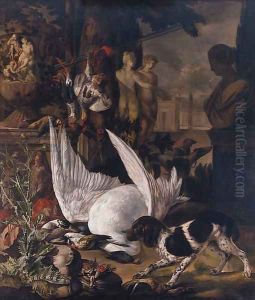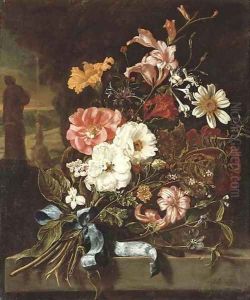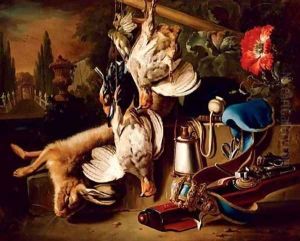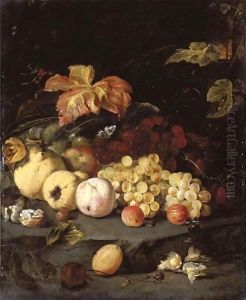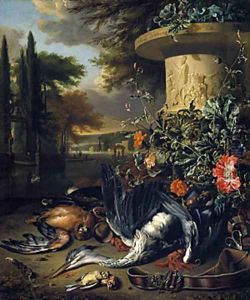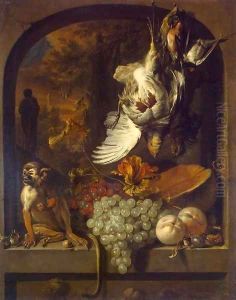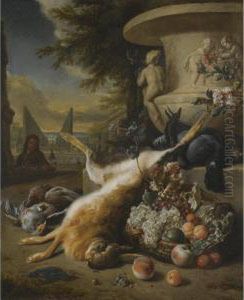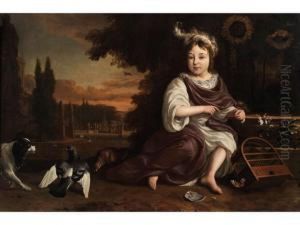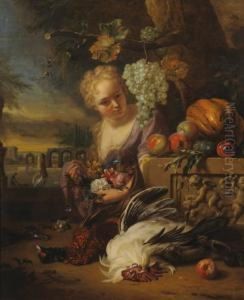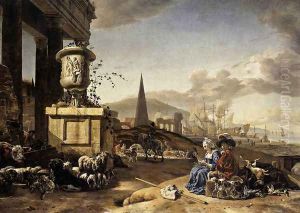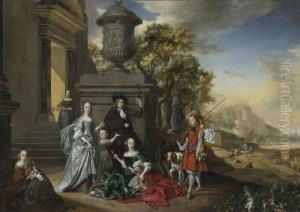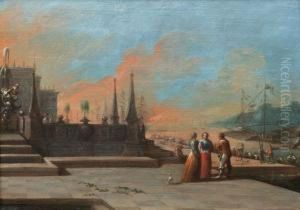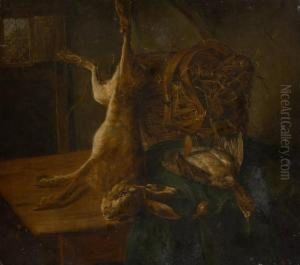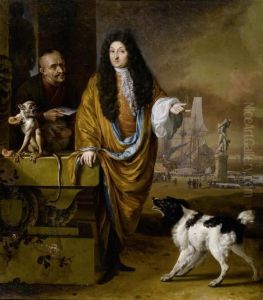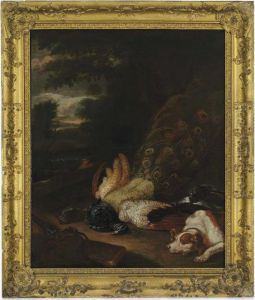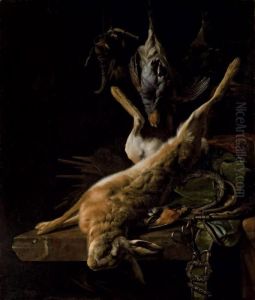Jan Weenix Paintings
Jan Weenix was a Dutch painter who specialized in lush still life and game pieces, a genre that showcases dead game, often together with fruit, flowers, and other objects. Born into an artistic family in Amsterdam, Jan was the son of the painter Jan Baptist Weenix, who also had a significant influence on his style and choice of subjects.
Jan Weenix's career began under the tutelage of his father, and he quickly developed his own artistic style. His early works were influenced by his father's style, but he soon distinguished himself with his fine brushwork and rich color palette. His paintings often depicted the spoils of the hunt, arranged in a manner that was both sumptuous and meticulously detailed. Weenix was adept at rendering textures and surfaces, creating a realistic portrayal of fur, feathers, and foliage that was almost tangible.
Throughout his career, Weenix received significant commissions from noble patrons, including William III of Orange, who was a great patron of the arts and had a particular fondness for hunting scenes. Weenix's works found favor with the aristocracy not only in the Netherlands but also across Europe, and his paintings were collected by many wealthy patrons.
In addition to his game pieces, Weenix also painted Italianate landscapes, portraits, and historical subjects. However, it is for his still lifes that he is best remembered today. His compositions are often grand and carefully constructed, with a sense of drama that goes beyond mere representation. They reflect the wealth and opulence of the Dutch Golden Age and the fascination with exotic goods and luxuries that came with the period's global trade.
Jan Weenix's work was popular during his lifetime and continued to be sought after following his death in 1719. His paintings can be found in many major museums around the world, testament to his enduring appeal and the high regard in which his art is held. Weenix's legacy lives on as a master of the still life genre, and his works are studied and admired for their technical excellence and their evocative portrayal of the era's richness.
